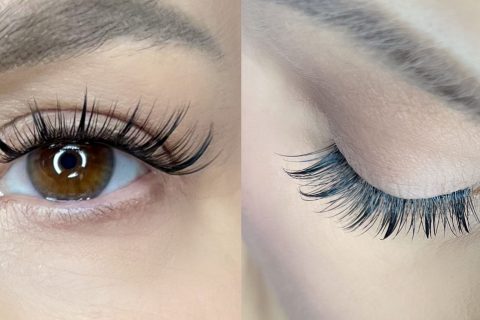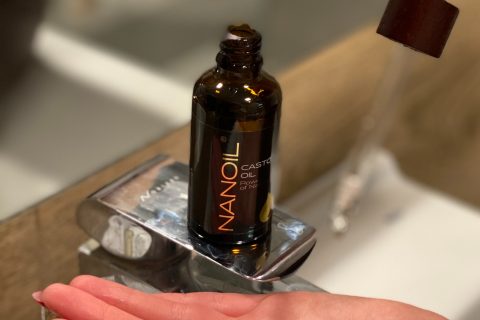Do discolorations force you to leave home with a thick layer of foundation on? Indeed, that was my problem as well. I was fighting with pigmentation marks long. I guess, by far, you know that simple solutions are what I love, therefore, I just needed to find some home remedy to deal with discolorations. And this solution is – Turmeric Face Mask.
I believe, I don’t have to explain and convince anyone that discolorations are a truly burdensome beauty problem. They appear on our face out of nowhere and it’s really hard to remove them. These pigmentation marks affect dozens, hundreds or even thousands of women, I’m sure about that. Blemishes and uneven skin tone most frequently come into existence after summer exposition to sun, when this autumn fatigue gets us – this is the very period when skin imperfections tend to appear fast. I don’t know if you’re aware of this but there are definitely more reasons why your skin becomes covered with such unwanted blemishes.
The most common reasons of face skin discolorations are:
- Intensive sun baths (especially during the summer).
- Frequent use of solarium.
- Natural processes connected with skin ageing.
- Hormone fluctuations (for example during pregnancy).
- Hyperthyroidism or hypocorticoidism.
In my case, the problem lay somewhere between hormonal changes in my adolescence period and lack of sunscreen while sunbathing on a beach. How did I manage to remove these unwanted blemishes? With the aid of turmeric, of course! ♡
Turmeric for discolorations
Definitely, it’s better known as seasoning. However, turmeric is also a cosmetic substance of incredibly great features that have been recently recognized. Personally, I love this substance because of what it is able to do with my face. I find turmeric perfect as a substance dealing with dull, fatigued and uneven acne skin.
For those of you who are curious, turmeric is a plant that belongs to zingiberaceae group. In its natural form it can be mistaken with ginger, yet when cut in a half, you can notice a saturated yellow colour, which is typical for this plant. I guess, you may not know this because we mainly buy powdered turmeric – which is a more convenient form. In fact, this is the very form of turmeric I apply to my beauty procedures because regardless of its form this seasoning:
- accelerates healing processes of wounds,
- reduces redness and highlights,
- has antiseptic and anti-inflammatory features,
- soothes irritations,
- it facilitates dead skin cells exfoliation and skin smoothing.
Who was the first to discover that turmeric is a natural remedy for skin problems? Presumably these were the Asian people from whom we adopted the most popular on the internet face mask for discolorations. Personally, I love almost all Asian cosmetics, hence, used in Chinese and Hindu beauty routines turmeric endeared my sympathy fast. Especially when we take into consideration its marvellous action, despite turmeric staining everything around yellow and being hard to remove.
♡ Turmeric Face Mask ♡
Turmeric face mask poses an alternative to financially-wreaking treatments aiming discolorations. Obviously, turmeric is easy-accessible, definitely cheaper than regular cosmetics and has been serving humans for generations. If the seasoning didn’t stain everything around, I would use it every single day. Currently, I take advantage of turmeric once a week (unless I forget to apply it, of course). If you would like to go by the book and follow the recommendations, you should apply turmeric 2-3 times per week, on the regular basis.
Preparing turmeric face mask is child’s play. You will need: 2 teaspoons of turmeric as well as the same exact amount of buttermilk, milk or kefir. Once mixed, you should obtain a pulp which consistency enables you to apply the mask to your face without any difficulties. For the beginning, just two ingredients will be enough, however, with time you can extend the face mask’s features by adding other natural substances like, for example:
- honey – intensifies nourishing and moisturising action,
- oat flakes – soothe irritations and even skin tone,
- cinnamon – cleanses skin effectively and acts anti-ageing,
- vegetable oils – improve moisturisation, smooth and regenerate,
- rose water – highlights and balances pH level of skin,
- cosmetic clay – cleanses skin and closes skin pores.
Of course, you can mix and combine the ingredients at will just to provide your skin with what it currently needs. At the same time, please bear in mind that everything is cool if done in moderation, therefore, it isn’t suggested mixing all the substances at once. Remember also that this is turmeric that has to comprise the most of the face mask, because, after all, it’s the turmeric action that we value most. Basically, you can replace buttermilk with honey, sometimes you can add oat flakes or a few drops of vegetable oil. To sum up, adjust the turmeric face mask to suit you most, yet do this wisely.
Turmeric face mask should be applied to cleansed skin – before the procedure, remove make-up precisely or go a step further and apply a scrub. Of course, thanks to removing all the pollution form your skin’s surface you help turmeric work better. This intensively yellow-coloured mask has to be applied to the entire face omitting eye skin area. Let me remind you once again, it’s worth protecting your shoulders, cleavage and even washbasin as well as everything around you from getting stained. For example, you can make a good use of old towels.
This treatment should last 10-15 minutes but no longer than that! Why? Turmeric can colour skin yellow if you let it sit too long. For that reason, it’s advisable to use this seasoning cautiously, although, we are tempted to keep the mask longer than that. After all, these are the features of turmeric we want to take the most of. However, I believe that you can let turmeric sit on your face more than a quarter of hour when you plan to say at home for the weekend. Then, you can cope with this yellow shade of your skin after removing the mask. For example, you can use a vegetable oil or some good face gel.
Are you brave enough?





Leave a Reply